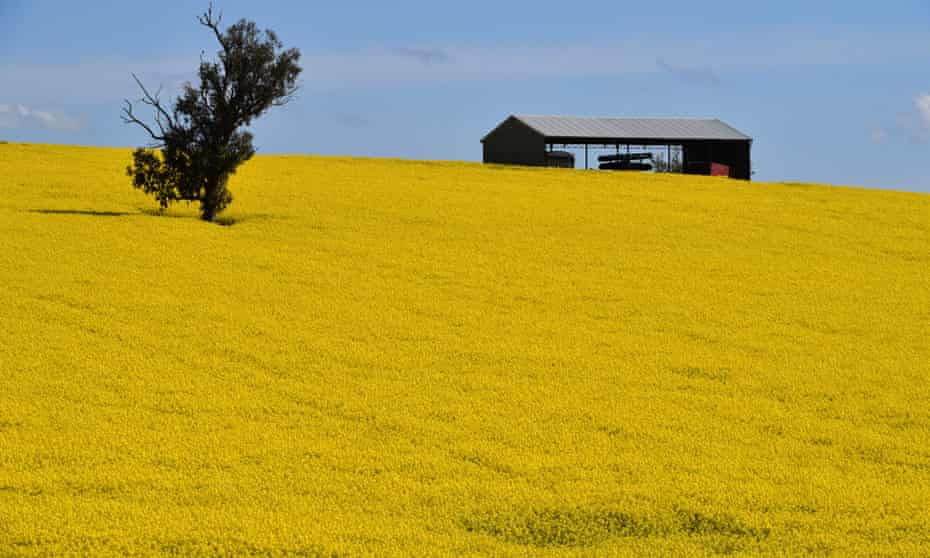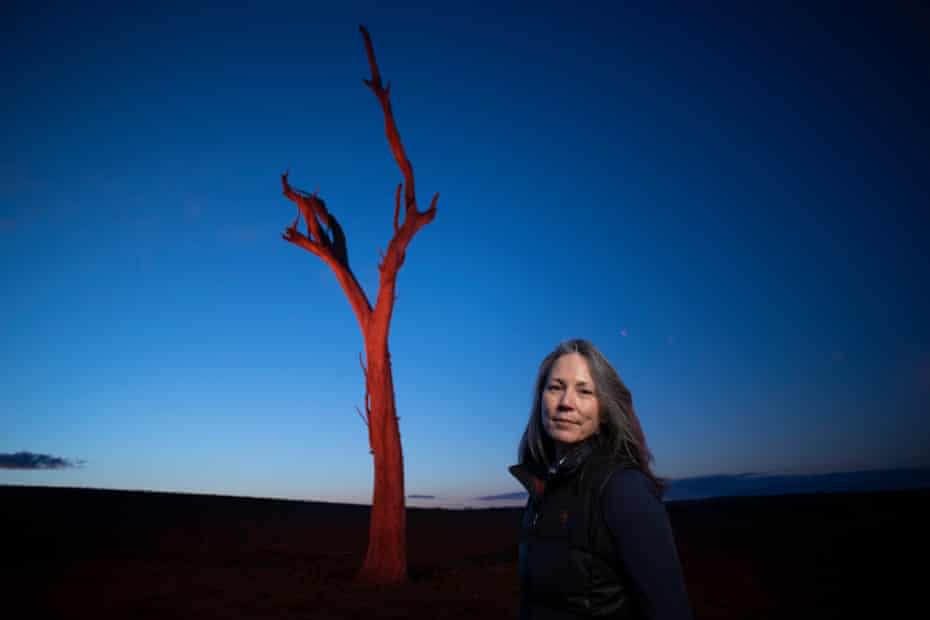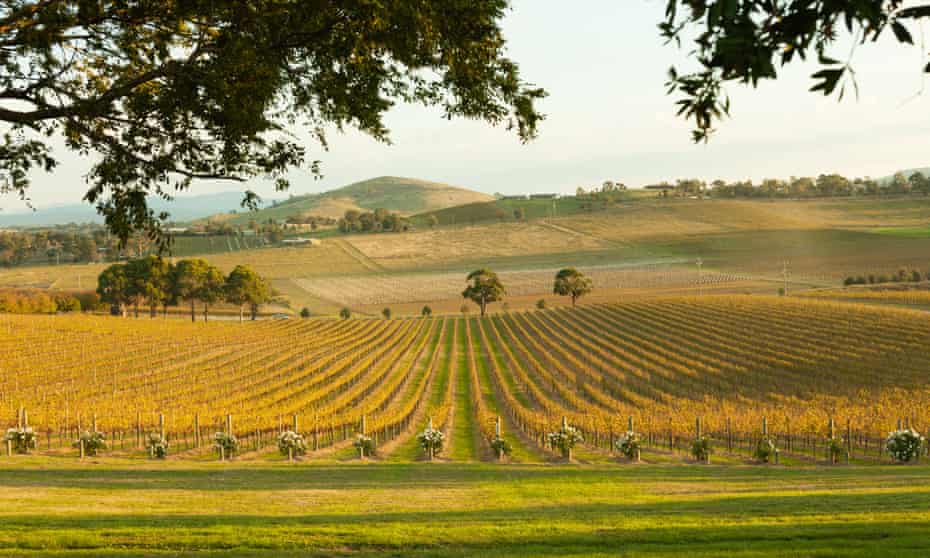Farmers manage more than half of Australia. We all have a stake in them getting it right

If you eat, you have an interest in farming. If you care about the environment, you have an interest in farming. Yet Australia has no national agriculture strategy
Strip away modernity. Unlearn everything you know about the complexity of your average day. The ordinary interaction, the workaday worries, the pinging of your phone, the relentless roll of the inbox. You are left with the human condition. Our most basic needs, as the American psychologist Abraham Maslow noted, are the physiological needs: food and water, sufficient rest, clothing, shelter, health and reproduction.
In Australia and much of the developed world, we often forget that food and water are central to the human story. Food is so plentiful, so present, it is not even secondary.
Yet in 2020, when we saw the shelves stripped empty in a Covid panic, how quickly the instinct to protect those basic needs kicked in. Those of us in developed countries were transported back through history, to the many moments of scarcity, as if living past lives or responding to genetic memories. In a flash, the basics became important. The impermanence of gathering food was underlined.
Although I am primarily a journalist, I have been living alongside food production for 25 years since I moved to a sheep and wheat farm. As I moved my political journalism away from insider reporting to outsider rural coverage, I was alerted to fractures in the farming system that are becoming clear after decades of economic reforms.
How food is grown and where it comes from are choices for every individual and country to make.
Think about how this currently happens in Australia. At its most basic, farmers use soil and water to grow crops and raise animals. In the act of growing, farmers must look after landscapes. Australian farmers manage up to 60% of the country’s land mass and account for up to 70% of its diverted fresh-water extractions. So we all have a stake in farmers doing their job well.
But it is not only that. Farmers are at the interface of the world’s most wicked problems.
Farming both contributes to and is endangered by the biggest existential threats of our time: climate change, water shortages, soil loss, energy production, natural disasters, zoonotic diseases, population displacement and geopolitical trade wars.

In the face of such pressure, there is a barrage of contradictory policies around food growing, and no Australian political party is doing serious thinking about how to knit together food, farming and environmental policies to continue feeding the population while mitigating climate change and biodiversity loss.
Here are some messages farmers receive from governments and consumers.
We want clean, green food to feed the world. We want scale because we want cheap food. We want family farmers. We want the mums and dads. We want big global capital. We want lots to export to help our balance of payments. We want resilience. We want farmers to stand on their own two feet. We want to pay no subsidies. We want farming to be like any other business. We want farmers to use the latest technology for productivity. We want them to look after the environment. We want farmers to look after native habitat for declining species. And now we want them to sequester carbon to turn around both their own emissions and some of the rest of the population’s emissions. I think that just about covers it.
It is a lot to get your head around, so here are three things to ponder as we reimagine Australia in the pandemic world.
Firstly, the only way most farmers currently get a pay rise is to make cheap food cheaper. Australia is one of only eight countries where households spend less than 10% of their income on food.
Farmers are paid on yield. Pushed by governments under the deregulation agenda, farmers largely traded the market power of compulsory trading desks and cooperatives for greater freedom to manage their own affairs. This has left them on a productivity treadmill that requires farmers to grow more with less.
The rules of the economy, the policies laid down by our governments, are set on one goal only: farmer economicus – maximising economic profit as a food producer. Those are the only signals food producers get right now, and a farmer needs to feed their family.
Secondly, expectations are rising that all land managers look after the environment.
Global food processors want food production that meets their Environment, Social and Governance requirements. A cohort of eaters want to know their food is grown without harming the environment. They want to know animal welfare practice is sound. Global governments need to meet their climate change commitments.
But the simple truth is the food price does not account for the environmental costs and, sometimes, the labour costs in the modern farming system. We have seen this labour shortage play out in the pandemic. Australia farmers are some of the least subsidised food growers in the world.
As a result of these pressures, global governments have starting paying farmers for environmental services to meet their commitments and ensure farmers have an adequate income source. This will require strong environmental accounting of natural systems to ensure farmers are making verifiable improvements.
By 2028, for example, the United Kingdom is phasing out the GBP1.6bn subsidy farmers receive every year for owning or renting land. Instead the funds will pay farmers to restore wild habitats, create new woodlands, boost soils and cut pesticide use.
This will change the economic signals away from production and towards restoration and regeneration of the landscape. Agriculture minister David Littleproud is working with the Australian National University on a biodiversity package, announced in this year’s budget, to verify environmental improvements in return for payments. This is a heartening policy development but we can only watch this space.
In Australia, Indigenous farmers, custodians and land managers need parity on this count too. Already some Indigenous managers are paid for cool burning and ranger programs. These could be expanded if we are to change the way we think about this as a revolution for land management.
Thirdly, the shift is away from small to mid sized family farms towards niche producers on one end and large agribusiness in the form of global companies or large family businesses. Big corporates can access cheaper finance and bulk buying outside the regions. This is causing the great hollowing out of farming and rural communities.
High-revenue farms now account for one fifth of the broadacre population but two thirds of land, income and output, according to the Australian Bureau of Agricultural and Resource Economics and Sciences. In 2021, a Weekly Times investigation found the top three Australian landowners by value were the Canadian Public Sector Pension Investment Board, Macquarie Agriculture (as in the bank) and the New York based pension fund Teachers Insurance and Annuity Association of America.
A 2021 Guardian Australia investigation of pastoral-lease data found the person who held the most land was Western Australian mining magnate Gina Rinehart. She controls 9.2m hectares, or 1.2%, of Australia’s land mass, through three different corporate entities. Corporate interests are bullish and larger family farms are buying out the neighbours.
Here is the bottom line. In the face of tectonic shifts in economic, environmental and social systems, government policy to promote economically and environmentally diverse, robust food and farming systems remains contradictory at best. Silent at worst.
Meanwhile, our communities and landscapes warp and change. Single farm failures are often put down to useless management, lack of scale, bad seasons and bad luck. You were not nimble enough for the marketing demands. You were not big enough at 500 hectares. You were not fast enough to buy the temporary water. Those high jumps keep creeping up. You are not big enough at 5000 hectares. You were not nimble enough to do the future trades. You didn’t have the nous to do the water trades. You don’t have the technology to shave your production costs.

Right now, the water market is designed to favour high return products. Currently that is nuts. So do we say to whole food-growing industries, sorry, dairy farmers, you weren’t nimble enough. Milk doesn’t earn enough. Sorry, wine grape growers, almonds make more money. Sorry, rice growers, we will buy from Vietnam (until they turn off the tap in a pandemic as they did in 2020). Eventually 90,000 farm businesses may drop down to 9000. Or even 900. Just as the supermarkets have settled into a duopoly over my lifetime. That’s how it works. We turn around one day and the landscape has changed.
The good news is that Australians have created a lot of innovative natural resource management programs, which have brought together formerly warring tribes like the green movement and the farmer groups. The bad news is that in the past decades, small-minded political parties have thrown out many policy programs because they were implemented by the opposite side of politics.
We have killed more clever policy institutes than I’ve had hot breakfasts: the National Water Commission, Land and Water Australia and the National Climate Change Adaptation Research Facility, to name a few. All were doing good work to try to synthesise and build the foundations for some connected food and farming policy solutions for managing our very tricky and ancient land mass.
We don’t back good ideas for the long term and then we wonder why evidence-based policies don’t work.
We are bright enough to reimagine an interconnected system that rewards economic diversity in farming that produces healthy food and landscapes. We just need to start connecting the dots.
-
Gabrielle Chan’s book Why You Should Give a F*ck About Farming (Penguin Random House) is out this week
